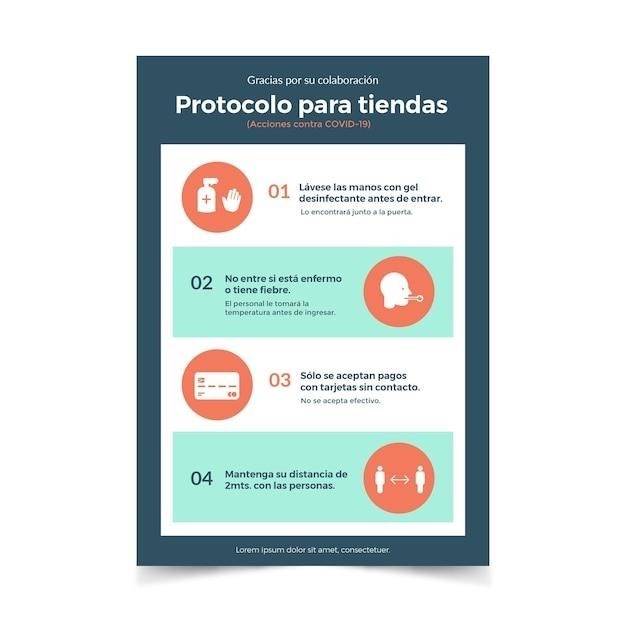CT-3-S Instructions⁚ A Comprehensive Guide

This guide provides comprehensive instructions for completing New York’s CT-3-S form, the S Corporation Franchise Tax Return. It covers filing requirements, key sections, line-by-line clarifications, payment and mailing procedures, amendments, and crucial updates for the current tax year. Resource links and contact information are also included for further assistance.
Understanding the CT-3-S Form
The New York State Department of Taxation and Finance’s CT-3-S form is crucial for S corporations operating within the state. This form serves as the Franchise Tax Return, used to report the corporation’s income and calculate the franchise tax due. It’s a comprehensive document requiring accurate and complete information. Understanding its structure and purpose is essential for accurate filing. The form requests various details about the corporation’s business activities, financial performance, and ownership structure. Failure to properly complete the CT-3-S can result in penalties and delays. The form facilitates the collection of franchise taxes, a vital source of revenue for New York State. The instructions accompanying the CT-3-S are extensive and provide guidance on each section. It’s advisable to thoroughly review these instructions before commencing the completion process to avoid common mistakes. Different sections require specific data, including income details, deductions, and apportionment factors. The form may also require supplementary schedules or attachments depending on the individual corporation’s circumstances. These attachments often provide additional detail on specific aspects of the corporation’s financial information. Accurate completion ensures the timely and efficient processing of the tax return, avoiding potential delays and complications. Remember, consulting a tax professional is always recommended for complex situations.
Filing Requirements for New York S Corporations
New York S corporations face specific filing requirements for their franchise tax returns, primarily managed through Form CT-3-S. These requirements are governed by New York State Tax Law, Articles 9-A and 22. All S corporations conducting business, employing capital, owning property, or deriving income within New York State are generally obligated to file. The filing deadline is typically in April, following the close of the tax year. This necessitates meticulous record-keeping throughout the year to ensure accurate reporting. Failure to file on time can lead to significant penalties and interest charges. The required information encompasses various aspects of the corporation’s financial performance, including income, deductions, and apportionment factors. Specific details about the corporation’s business activities within New York are also crucial. The filing process may involve additional forms or schedules depending on the corporation’s unique circumstances and financial activities. The New York State Department of Taxation and Finance’s website offers comprehensive guidelines and downloadable forms. It is highly recommended to familiarize yourself with these resources to ensure compliance. For those needing assistance, professional tax advice is readily available to ensure accurate and timely filings. Proper understanding of these requirements is paramount for maintaining compliance and avoiding potential legal issues. The penalties for non-compliance can be substantial, so diligence is key. Always double-check all submitted information for accuracy before filing to minimize the risk of errors.
Completing the CT-3-S Form⁚ Key Sections
The New York CT-3-S form, used for filing S corporation franchise taxes, comprises several key sections demanding careful attention. Part I gathers general information about the corporation, including its name, Employer Identification Number (EIN), tax period, and whether the filing is an initial, amended, or final return. Accurate entry of this foundational data is critical for processing. Part II focuses on the corporation’s business activity within New York State, requiring details on income, deductions, and other relevant financial data. Precise calculation and accurate reporting are essential to avoid potential discrepancies and penalties. Part III delves into the apportionment of income, a crucial calculation determining the portion of the corporation’s income subject to New York’s tax jurisdiction. Understanding apportionment factors is vital for accurate tax liability determination. This often involves considering the corporation’s sales, payroll, and property within and outside of New York. The instructions accompanying the form provide detailed explanations and examples to guide filers through this complex calculation. Specific lines may require additional supporting documentation, and adherence to these instructions is mandatory. Any discrepancies or omissions can result in delays and potential penalties. The final sections of the form pertain to payment and contact information. Ensuring complete and accurate completion of every section is crucial for a smooth and timely processing of the return, preventing any complications or delays. The official instructions accompanying the form offer invaluable guidance on each section, emphasizing its importance for correct tax calculation.
Line-by-Line Instructions and Clarifications
Navigating the intricacies of the CT-3-S form necessitates a thorough understanding of each line item. This section offers detailed explanations and clarifications for every line, ensuring accurate completion. For instance, line 7, often requiring reference to pages 8 and 9 of the instructions, deals with specific subtractions from the corporation’s income. Understanding these subtractions is critical for precise tax calculation. Similarly, line 14, referencing pages 9 and 10, addresses other potential subtractions, demanding careful attention to detail. The instructions emphasize the importance of accurately reporting all income sources and allowable deductions. The instructions may also guide you through the process of reporting specific items, such as qualified subchapter S subsidiary (QSSS) income, which requires additional forms like CT-60-QSSS to be attached. This comprehensive approach aims to resolve any ambiguities and facilitate a smooth filing process. The instructions often provide examples to illuminate the application of specific rules, particularly complex aspects like apportionment calculations. Line 30, with its subsections 30.1 through 30.5, often requires careful attention, with detailed guidance provided in the supplemental instructions. Furthermore, the instructions might clarify the acceptable payment methods, addressing the handling of foreign checks and money orders. This granular level of detail ensures that filers can confidently complete each line with accuracy, leading to a correctly filed return and avoiding potential penalties for errors or omissions. Understanding these specifics is crucial for ensuring compliance with New York State tax regulations.
Payment and Mailing Instructions
Accurate and timely payment of the franchise tax is crucial for avoiding penalties. The CT-3-S instructions provide precise details on acceptable payment methods, emphasizing the use of checks or money orders payable in United States funds. Specific instructions may address the acceptance of foreign payments, often requiring them to be payable through a US bank or explicitly marked “Payable in U.S. funds.” The instructions clearly outline where to send the completed form and payment. The designated mailing address is typically the New York State Corporation Tax, Processing Unit, with the specific PO Box number and city, state, and zip code provided. For those using private delivery services instead of the US Postal Service, separate instructions may be included, outlining any specific requirements or procedures. These instructions may detail how to properly attach the payment to the return, including any stipulations regarding detaching check stubs. Failure to follow these instructions precisely may result in delays in processing the return or the imposition of penalties. The instructions may also offer advice on tracking the payment and receiving confirmation of its receipt by the tax authorities. Additional information may be provided regarding electronic filing options, if available, offering a more convenient and efficient alternative to mailing a paper return. The instructions are designed to ensure a clear and straightforward process for both payment and mailing of the CT-3-S form, minimizing the risk of errors and delays. Understanding and adhering to these instructions is essential for compliance and efficient tax processing.
Amendments and Final Returns
The CT-3-S instructions clearly outline the procedures for filing amended returns and final returns. Filing an amended return is necessary when errors or omissions are discovered in a previously filed return. The instructions will specify the form to use for amendments, often a variation or specific section within the CT-3-S itself, and will detail the information required to correct the errors. This typically includes clearly identifying the original return being amended, specifying the lines or sections needing correction, and providing supporting documentation to justify the changes. Penalties for late filing or failure to file amended returns may be outlined. For final returns, the instructions explain the process for corporations ceasing operations or changing their business structure. Specific instructions are provided on how to indicate the final return status on the CT-3-S form, often requiring specific checkboxes or designated sections to be completed. The instructions may also provide guidance on the necessary documentation to support the final return, such as evidence of dissolution or corporate restructuring. The deadlines for filing final returns are usually clearly stated, along with potential consequences for late submissions. Important considerations regarding outstanding tax liabilities, including any payments due, will be emphasized. The instructions may also address the process for obtaining any necessary closing tax clearances or certificates. These instructions ensure a smooth and compliant process for businesses concluding operations or needing to correct previously submitted information, minimizing potential penalties and complications.
Specific Instructions for Lines 30.1-30.5
Lines 30.1 through 30.5 on the New York CT-3-S form require detailed attention, as they pertain to the allocation and apportionment of income for S corporations operating within and outside New York state. The instructions will provide precise guidance on how to calculate and report income derived from business activities within and outside the state’s jurisdiction. This often involves determining an apportionment factor, a crucial calculation reflecting the proportion of a corporation’s business activity conducted within New York. The instructions will define the components used in calculating this factor, such as sales, payroll, and property. Each line (30.1-30.5) will likely correspond to a specific component of the apportionment factor, with clear instructions on how to input the relevant data. For example, line 30.1 might pertain to sales within New York, while 30.2 addresses sales outside New York. The instructions will specify the necessary documentation to support these figures and how to handle situations involving multiple business locations or activities. Special considerations might be given to specific industries or types of income. Clear examples and formulas are usually included to illustrate the correct calculation of the apportionment factor and its application in determining the taxable income attributable to New York. The instructions will likely emphasize the importance of accurate reporting, as errors in these lines can significantly affect the final tax liability. Understanding these specific instructions is crucial for accurate and timely filing of the CT-3-S return.
Understanding Apportionment Factors in New York
Accurately determining the apportionment factor is critical for New York S corporations filing the CT-3-S form. This factor represents the portion of a company’s total business income subject to New York’s franchise tax. It’s calculated using a formula that considers various factors reflecting the extent of a corporation’s business activity within the state. Key components typically include sales, payroll, and property. The sales factor considers the ratio of sales within New York to total sales everywhere. Similarly, the payroll factor compares the payroll within New York to the total payroll. The property factor uses the ratio of property value in New York to the total property value. These three factors are usually averaged to arrive at the final apportionment factor, which is then applied to the corporation’s total business income to determine the taxable income in New York. The instructions will likely provide specific details on how to calculate each component, including how to handle situations with multiple business locations or complex transactions. Understanding the apportionment factor calculation is essential for correctly determining the tax liability. The New York Department of Taxation and Finance’s website and publications offer further guidance and examples to aid in accurate calculation. The instructions may also address special rules or exceptions for certain industries or types of income. Precise adherence to these guidelines is vital for accurate tax reporting and compliance.
Additional Forms and Schedules (CT-3-S-ATT, CT-60, etc.)
The New York CT-3-S form may require supplemental documentation depending on the specifics of the S corporation’s operations and financial circumstances. Form CT-3-S-ATT is frequently used as an attachment to provide additional information or detail not readily captured within the main CT-3-S form. This attachment might be necessary to report details on business allocation percentages (BAP) and investment allocation percentages, crucial elements for apportionment calculations. Form CT-60, or its variations, may also be required, often serving as a schedule for reporting affiliated entity information. The need for these additional forms can depend on factors such as the presence of affiliated businesses, the complexity of the business structure, or specific tax situations. The instructions will clearly indicate which supplementary forms are necessary based on the individual circumstances of the S corporation. Failure to include required supplementary forms can lead to delays in processing the return or potential penalties. It is crucial to carefully review the instructions to ensure all necessary forms are completed accurately and submitted with the CT-3-S return. Referencing the official New York State Department of Taxation and Finance website for the most up-to-date versions and detailed instructions for these forms is highly recommended. Always ensure that all information provided on supplemental forms aligns perfectly with the data reported on the primary CT-3-S form to maintain consistency and avoid errors.
Important Updates and Changes for the Current Tax Year

Tax laws and regulations are subject to change, and it’s essential to be aware of any modifications impacting the CT-3-S form for the current tax year. The New York State Department of Taxation and Finance regularly updates its forms and instructions to reflect legislative changes, court rulings, or administrative decisions. These changes can affect various aspects of the return, including filing deadlines, allowable deductions, calculation methods, or required disclosures. To ensure compliance, always refer to the most current version of the CT-3-S instructions available on the official website. Look for a clearly stated revision date or version number to confirm you’re using the most up-to-date version. Changes might affect specific lines or sections of the form, such as modifications to the apportionment formula, adjustments to allowable credits, or new reporting requirements. Pay close attention to any highlighted changes or notes within the instructions themselves. Ignoring these updates can lead to inaccurate reporting, processing delays, and potential penalties. Therefore, staying informed about these updates is crucial for accurate and timely filing. Utilizing resources like the department’s website or consulting with a tax professional will ensure you’re aware of all relevant modifications for the current tax year, enabling you to complete your CT-3-S return correctly and avoid potential issues.
